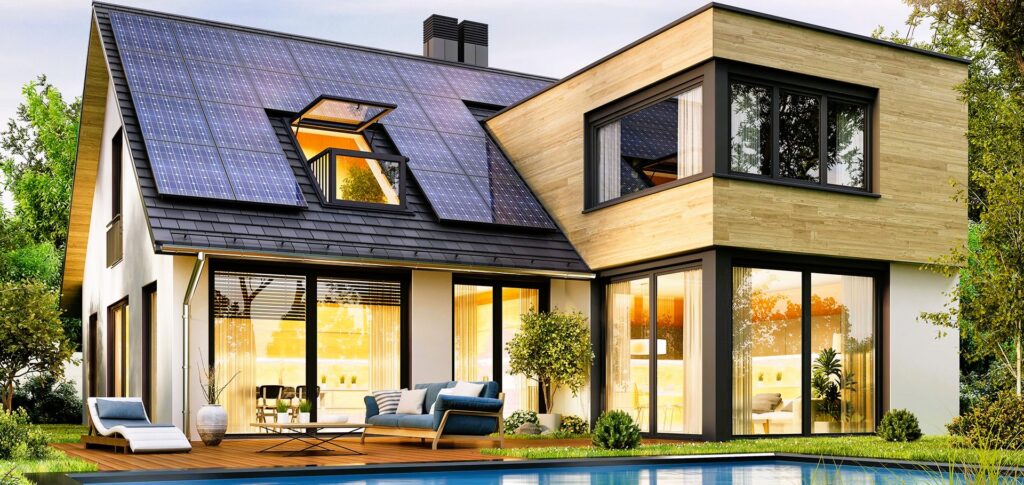Coastal properties in Victoria, Canada, offer breathtaking views and a unique living experience. However, the coastal environment also presents specific challenges, such as saltwater corrosion, strong winds, and varying weather conditions. Designing eco-friendly windows for coastal properties requires a thoughtful approach that balances sustainability, energy efficiency, and durability. In this article, we will explore the key considerations and design principles for eco-friendly windows that can withstand the coastal elements while contributing to a greener and more sustainable living space.
1. Material Selection:
Choosing the right window materials is critical for coastal properties. Coastal areas expose windows to saltwater spray, which can accelerate corrosion. Opt for materials that are resistant to saltwater damage, such as fiberglass, vinyl, or aluminum. These materials are not only durable but also low-maintenance, reducing the need for frequent repairs or replacements.
2. Impact Resistance:
Coastal properties are vulnerable to strong winds and potential impact from debris during storms. Selecting impact-resistant windows is essential to enhance the safety and protection of your home. Impact-resistant windows are designed to withstand high winds and flying debris, reducing the risk of damage to both the windows and the property’s interior.

3. High-Quality Sealing and Weatherproofing:
Proper sealing and weatherproofing are crucial for coastal windows to prevent water infiltration and air leakage. Salt-laden air and moisture can cause damage to the window frames and compromise indoor comfort. High-quality weatherstripping and sealants will help keep the elements out and maintain a comfortable and energy-efficient interior.
4. Energy-Efficient Glazing:
Energy efficiency is a key consideration for eco-friendly windows, especially in coastal properties that may experience extreme temperature fluctuations. Energy-efficient glazing with Low-E coatings and multiple glass layers helps regulate indoor temperatures, reducing the need for heating and cooling, and lowering energy consumption. Financial benefits of investing in environmentally friendly windows, read more in our article.
5. UV Protection:
Coastal areas often receive intense sunlight, which can cause fading and damage to interior furnishings and finishes. UV-resistant coatings on window glazing help protect your property’s interiors from harmful ultraviolet rays while allowing natural light to enter.
6. Consideration for Views:
Coastal properties often boast stunning ocean views, and the design of eco-friendly windows should not compromise these breathtaking vistas. Opt for window designs that provide expansive views and consider large picture windows or sliding glass doors to bring the beauty of the outdoors into your living space.
7. Window Orientation:
Strategic window orientation can optimize energy efficiency and natural ventilation. For coastal properties in Victoria, consider the prevailing wind direction and position windows to capture cooling sea breezes in the summer while minimizing heat loss in the winter.
8. Sustainable Manufacturing Practices:
Choose window manufacturers that prioritize sustainable manufacturing practices and use environmentally friendly materials. Look for certifications such as ENERGY STAR® and other eco-labels that indicate the windows’ energy efficiency and environmental performance.
9. Regular Maintenance:
Even with durable and eco-friendly windows, regular maintenance is essential, especially in the harsh coastal environment. Regular cleaning and inspection will help prolong the lifespan and performance of your windows.

The Role of Standardization in Coastal Window Design:
Standardization organizations, such as Canada.ca, provide guidelines and best practices for eco-friendly window design and installation. Adhering to these standards ensures that coastal window designs meet industry requirements for sustainability, safety, and performance.
Conclusion:
Designing eco-friendly windows for coastal properties in Victoria requires a thoughtful approach that balances sustainability, durability, and energy efficiency. Selecting the right materials, incorporating impact-resistant features, ensuring proper sealing and weatherproofing, and considering window orientation are essential considerations. By working with reputable manufacturers and following standardization guidelines, you can create eco-friendly windows that not only withstand the coastal elements but also contribute to a greener and more sustainable living space, allowing you to enjoy the beauty of the coast while reducing your environmental impact.

